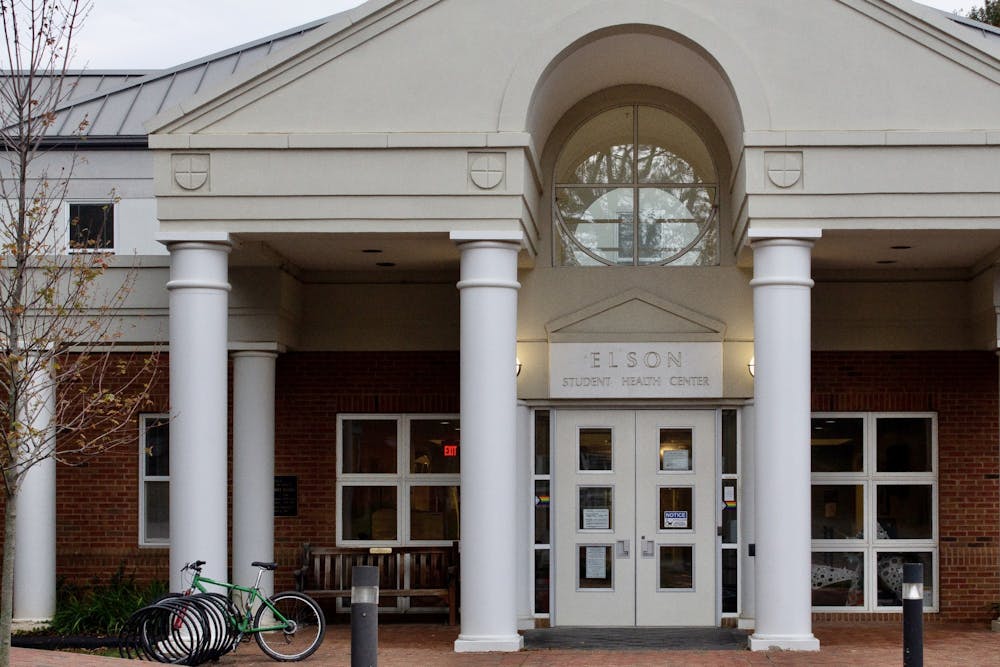With the recent outbreaks in the University’s dorms and new cases every day, COVID-19 testing remains extremely important. Testing provided by the University is at an all-time high with 50 to 150 asymptomatic students chosen randomly every day to receive tests, alongside prevalence testing occurring every weekday for several on-Grounds dormitories, in addition to the symptomatic students tested daily. The University’s efforts to expand testing of asymptomatic students and provide testing to all on-Grounds residents has led to an increase in the number of tests conducted by U.Va. Health, Student Health and affiliated clinics — from 1,630 tests administered over the week of Sept. 6 to 12 to 5,041 tests administered Oct. 18 to 24, according to the University COVID-19 tracker.
The University has managed this increasing demand for testing supplies by utilizing multiple forms of testing that require different materials, including saliva tests. However, shortages at U.Va. Health still remain according to physicians in the U.Va. Health System. The influx of patients looking to get tested for COVID-19 in primary care offices has led to a shortage of personnel and testing space — an issue that is expected to worsen as we enter flu season.
Last spring, the University experienced its first shortage in testing materials — mainly swabs and mediums, substances on which cells and tissues can be cultured — as a large influx of Charlottesville residents overwhelmed its primary care centers and hospitals. In response, the University developed their own method for 3D printing nasopharyngeal swabs — the swabs used for a majority of testing as they can collect samples from deep within the nasal cavity — diminishing the shortage. Since the return of the University students, U.Va. has employed a variety of testing options including mid-nasal, saliva and nasopharyngeal.
Jessica Simmons, director of medical services at Student Health and Wellness, speaks to the increased breadth of testing among U.Va. students because of the variety of testing options.
“Using a variety of testing methods has allowed U.Va. to broaden testing to include consistent prevalence testing, testing for exposures and symptomatic testing,” Simmons said in an email to The Cavalier Daily.
Robert Boler — a physician assistant at U.Va. Primary Care Riverside, a University location where students may get directed to for nasal swab testing — says he has never faced a supply shortage since the return of University students and that U.Va. regularly monitors where it's having shortages in order to address them right away. Similar sentiments were echoed by John Davison, a family physician at U.Va. Primary Care Riverside.
“The entire system at U.Va. sort of directed their COVID-19 testing to [the Riverside] facility,” Davison said. “The reagents and the supplies are not an issue at this point … If somebody comes in and needs to be tested, whether they're asymptomatic or symptomatic, they get tested.”
Boler and Davison’s confidence in testing availability is seen through the experience of second-year Nursing student Neha Jain, who recalls her first time recieving a COVID-19 test at Student Health in mid-October as “fast and efficient.” Even as an asymptomatic patient, she received her results within 20 hours, faster than the University’s advertised response time of 24 to 48 hours. However, while Jain’s testing experience went smoothly, students reported issues with scheduling tests at the beginning of the semester.
Davison credits a large part of the consistent supply of testing swabs to the University’s novel process of using 3D printers to make their own swabs for nasopharyngeal tests. Additionally, the University has continued to implement efficient and innovative ways to conduct tests, including testing the wastewater from University dorms. Boler also sees the benefits of wastewater testing in a University setting.
“Wastewater testing is pretty interesting because [it allows the University to] extrapolate data about a group of people who are living in a communal setting … and not necessarily have to individually test every person in there,” Boler said.
Although testing supply demands are being met, another kind of deficiency is presenting itself — a shortage in health personnel and space in the primary care facilities. As expenditures for personal protective equipment and testing supplies increase at Riverside Primary Care, Davison has experienced a freeze of sufficient manpower.
“Where we run into a problem is … just the overwhelming number of people who want to be evaluated for testing,” Davison said. “There have been more people that come to our office most days than we can possibly see.”
The shortage in personnel and space in testing centers like Riverside gives rise to worries about the center’s ability to treat patients during the upcoming flu season. An increase in mild viral illnesses, such as a cough, a cold or the flu, is inevitable and is expected to peak in January 2021. With Riverside already running at above 100 percent capacity since the summer, Davison says there is no buffer zone.
“Our office is not going to be able to see essentially any more people than we already do,” Davison said.







